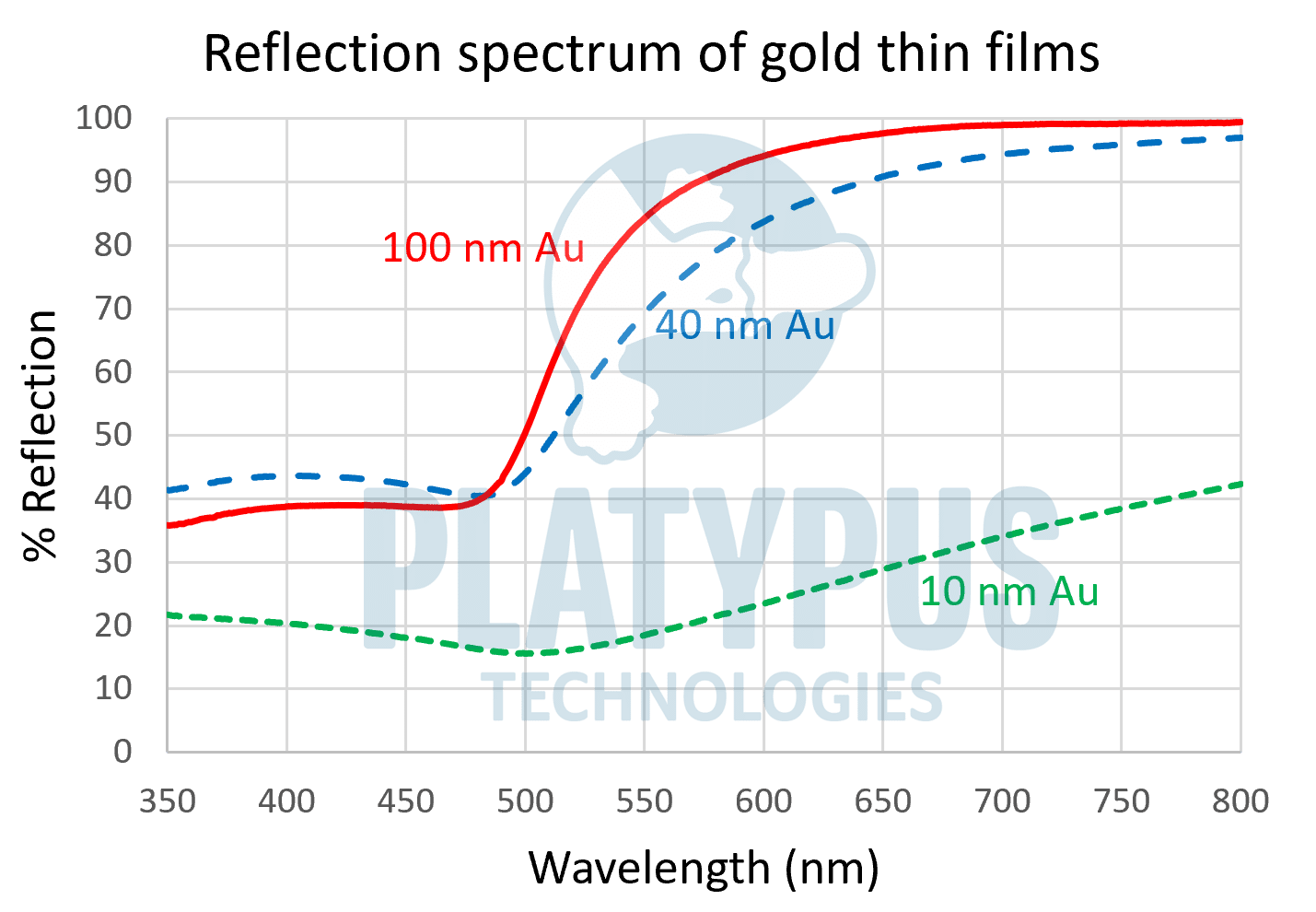Gold Thin Films: Reflectivity Across Different Thicknesses
In the realm of optical technology and research, gold thin films have carved a significant niche. Their unique reflective properties make them invaluable in various applications. In this article, we delve deeper into understanding how the thickness of these films—specifically at 100 nanometers, 40 nanometers, and 10 nanometers—affects their optical reflection.
The Gold Standard in Reflectivity
Gold’s unparalleled reflective properties have been utilized in myriad technologies, from satellite instruments to protective coatings in astronaut helmets. However, gold’s malleability enables us to reduce it to nanoscale thicknesses, which changes its reflective characteristics.
The Thickness-Reflection Relationship
When gold is processed into thin films, its optical behavior undergoes a shift. As depicted in the figure below, three distinct curves represent the optical reflection of gold films at 100 nm, 40 nm, and 10 nm thicknesses. These spectra were collected at wavelengths of light between 350-nm and 800-nm, at an angle of incidence near normal to the substrate.

Interpreting the Data:
- 100 nm Au: The red curve, representing the thickest film, exhibits reflection >90% for wavelengths longer than 580-nm. The reflection curve decreases rapidly for shorter wavelengths, and plateaus at around 39% for wavelengths between 450-nm and 400-nm. This reflection is consistent with the optical behavior of bulk gold.
- 40 nm Au: The blue dashed curve, indicative of the intermediate thickness, shows a decline in reflection in comparison to the 100 nm film at wavelengths longer than 480-nm. However, the reflection for 40-nm Au is higher than for 100-nm Au at wavelengths between 350-nm and 480-nm. Notice that the reflection spectrum for this film exhibits a minimum of 40% reflection at 480-nm. It’s evident that as the film becomes thinner, its optical properties begin to change.
- 10 nm Au: The green dotted curve represents the thinnest film. Here, the reflection drops noticeably, showcasing how gold’s properties are markedly different at ultra-thin dimensions.
Implications and Applications
Different technological applications necessitate gold films of varying thicknesses:
- 100 nm gold films: Ideal for applications where high reflectivity is paramount. These applications include: (a) analysis of materials via ellipsometry or spectroscopy, and (b) mirrors for lasers, telescopes, and optical instruments.
- 40 nm gold films: Useful in scenarios requiring a balance between reflectivity and transmissivity, including sensor chips for surface plasmon resonance (SPR).
- 10 nm gold films: Best suited for applications necessitating minimal reflection and high transmission, such as optical microscopy of cells, crystals, and microparticles
Wrapping Up
The optical reflection of gold thin films is a dynamic interplay between material properties and film thickness. As we’ve seen, even minute changes in thickness can result in pronounced shifts in reflectivity. By understanding these shifts, we can better harness gold’s unique properties for various technological advancements.
In the ever-evolving landscape of nanotechnology and optics, gold continues to shine bright, proving its worth not just as a precious metal, but also as an invaluable asset in scientific innovation.
Do share this article with peers and colleagues who might find this information beneficial, and feel free to explore our range of products related to gold thin films at Platypus Technologies.